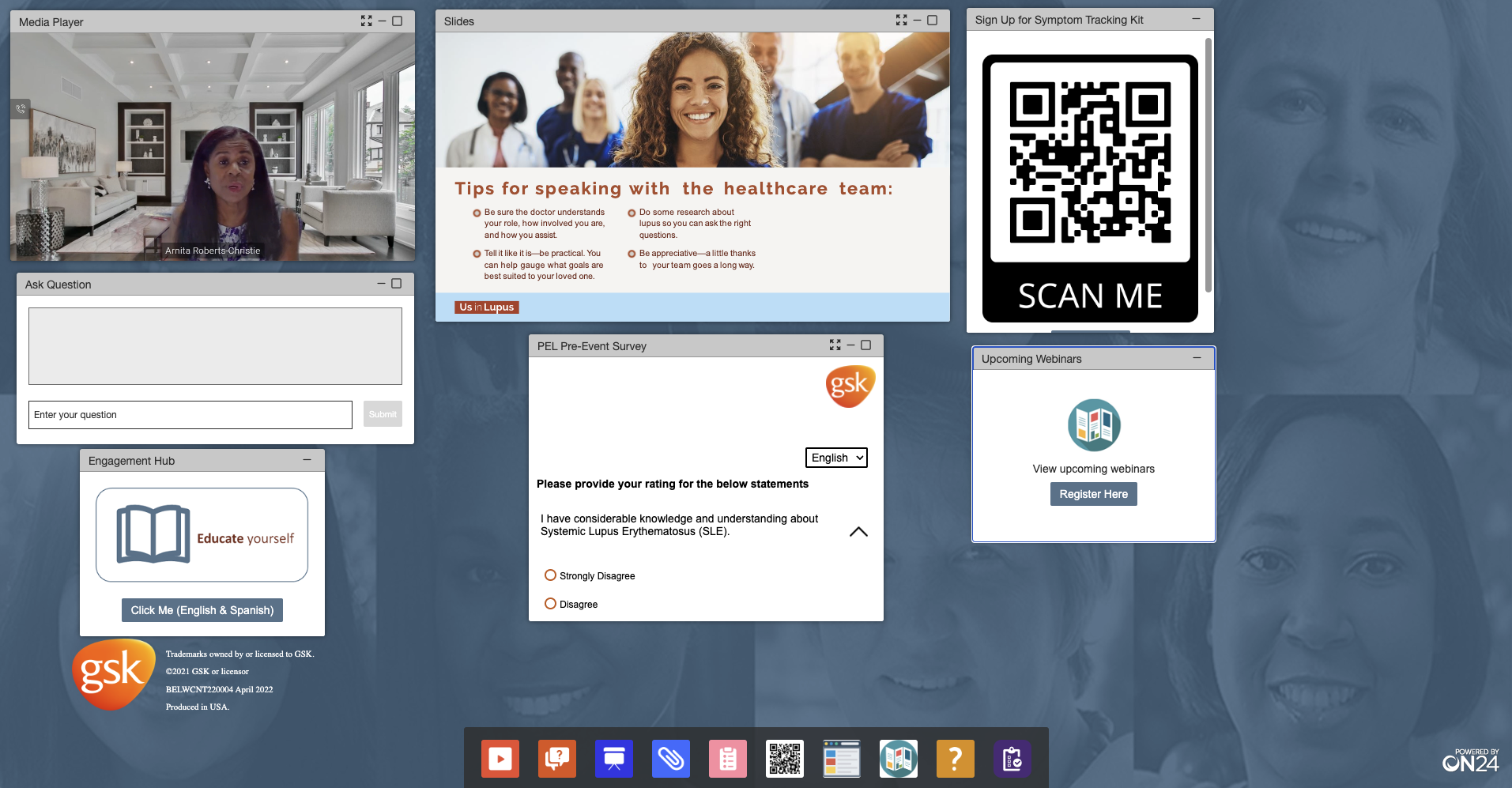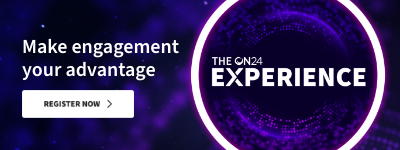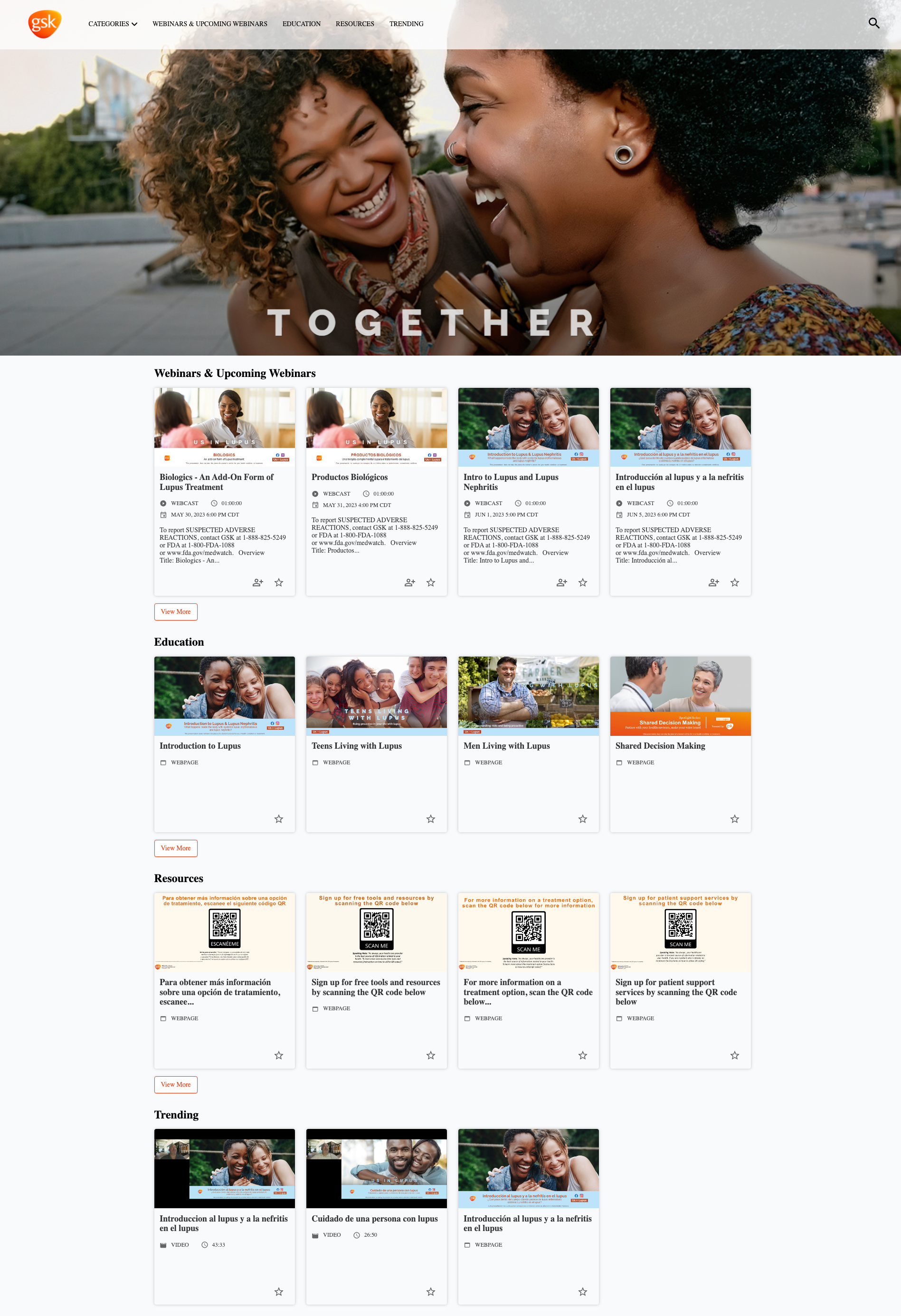How GSK Innovates Patient Education Through Digital Engagement

May is National Lupus Awareness Month and we’re proud to spotlight how a thoughtful digital engagement strategy is helping to innovate patient education in a special Q&A with Dr. Angelia Drake, DNP, MSN, RN, Director of Community Engagement and Strategy at GSK.
You can learn more about GSK’s digital transformation story at The ON24 Experience, register now.
Tessa Barron: When and why did your journey to digitally innovate patient engagement start?
Dr. Angelia Drake: Everything started with the launch of our patient engagement liaison (PEL) team in 2019. When we stood this team up, we learned — from multiple Patient Advocacy Groups (PAGs), patients and communities — that there is a significant education gap with patients who may not be able to attend larger national events for PAGs.
This gap, we found, is related to reach and connectivity. For example, larger events may be too far for patients to get to; patients may not be available on a specific day or time; or other barriers pop up, impacting a patient’s ability to attend the live event.
Additionally, we learned during COVID that digital was the best way to provide disease education and awareness and reach and connect with patients. Even today, we continue to use digital channels to bring education and resources to patients everywhere.
TB: What is your digital patient engagement strategy, and what does that look like in real life?
AD: Our digital strategy with our gskPLACEhub.com is to continue to bring education to patients on their time schedule and where they can view it when it meets their schedule.
We provide up to six webinars a month to make it easy for patients to join all the webinars or only the topics they are most interested in learning about.
We also have on-demand videos and resources to help connect patients to the information they need to help them manage their disease with their doctors.
TB: You’re currently running an important content series to educate patients during Lupus Awareness Month, tell me about that.
AD: We’re running 11 English and Spanish-dedicated webinars during the month of May to bring heightened awareness to Lupus. We know patients may be seeking education and resources during this month, so our PELs are doing their great work of hosting webinars to allow many opportunities for patients and caregivers to learn more and become empowered to own their healthcare and be part of the shared decision-making process with their healthcare team/doctors.
We also just hosted a special live Q&A with nurses where we asked our community to submit their questions to our nurses. This really puts the emphasis on what’s top of mind for patients and creates an environment for that ongoing dialogue.

TB: And from all of your activity, are there any key learnings you can share as an industry best practice?
AD: As I mentioned earlier, our program is centered on increasing access to patient education. So, the more we can make content easy to access, and integrated into the holistic patient journey, the better.
That’s why having a centralized destination with upcoming and on-demand content for patients is important — it gives patients the ability to engage with educational resources on their own time in a really easy way and connect to our available resources to help them manage their disease as well as find the next upcoming virtual event that they may attend.
It’s also been really important for patients to interact with our PELs and learn more about their disease state in an environment that’s comfortable for them, most likely within their own homes. We’re able to bring education to them vs require patients to come to us, and for those who may be coping with their disease, that can make a difference.
But, when it comes to the actual content hub, we’ve learned a few best practices.
-
- Provide patients with a consistent destination that PAGs can help promote
- Make education engaging and interactive
- Serialize content into a set of related episodes, including for caregivers
- Make it accessible to patients with multilingual experiences
- Learn what content resonates and use it to plan future content
TB: Okay, last question: What’s your vision for the future of patient engagement?
AD: Overall, our vision for the future of patient engagement is a world where patients are at the center of care and have the resources they need to both understand their disease state and be active participants in their treatment.
In the same way, we can all find answers to questions with the click of a button in our personal or professional lives, that same wealth of knowledge and immediate access needs to be made available to patients. I believe digital technology is an important enabler in making this a reality and potentially improving patient outcomes.

